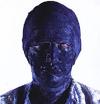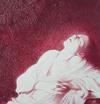Turun Ylioppilaslehti, Finland – October 9, 1998
One-man show, WA Museum of Art, Finland
SLAUGHTERING THE PUBLIC ANIMALS
The eyes are plucked out because they are no longer needed, is the first thought the Gottfried Helnwein exhibition creates. Helnwein's most widely known work is probably the self-portrait made for the 1982 Scorpions record cover. In it recurs the same subject matter which Helnwein had put to use in dozens of works.
Turun Sanomat, Finland – October 2, 1998
Wäinö Aaltonen Museum of Art, Turku, Finland, 1998
GOTTFRIED HELNWEIN IN TURKU, - "I ASK, I DO NOT ANSWER."
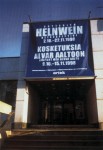
"I ask, I do not answer." - My works are questions, not answers, says the Austrian, Gottfried Helnwein, time and time again focusing on the most sore points of contemporary, general and private history.
Abo Underrätteiser, Finland – October 1, 1998
Wäinö Aaltonen Museum of Art, Turku, Finnland, 1998
THE POWER OF IMAGES AND EVIL
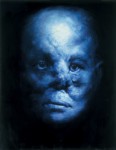
The child has grown into a world famous artist. But he has carried his questions with him. Today opens a large retrospective exhibition of Helnwein's art in Waino Aaltonen Museum of Art in Turku. The exhibition contains aquarels, oil paintings, drawings and photographs. They have often caused controversies by dealing with subjects that are all too sensitive.
Taide, Finland – April 30, 1998
One-man show, Wäinö Aaltonen Museum of Art, Turku, Finnland
THE WORLD IS EVIL
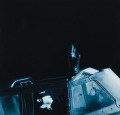
The exhibition in the WA Museum of Art by the Austrian artist Gottfried Helnwein does not make you happy, but it does feel good - in a masochistic way. With his works Helnwein proves that under a sophisticated facade this world is a wretched place to live in. In an interview he says: "I know that individuals are poorly treated on this planet. They are being harmed and subdued. And all this is covered by optimistic propaganda. Far before I began painting I felt that humanity was in a dire state. The pain reaches out to everyone, even though it is rarely spoken of. Nonetheless everyone wants to overcome the pain, to transcend it."
FLASH ART, The World's Leading Art Magazine – January 1, 1998
Retrospective at the State Russian Museum, St. Petersburg, 1998
GOTTFRIED HELNWEIN

Austrian-born artist Gottfried Helnwein is a brave, often overlooked, and unfairly compared virtuoso of versatility. In his work, he forces us to confront, via his visual wit, brio, and candor, the human face of violence and angst. The recent solo retrospective of over 400 works on view at the Marble Palace, the contemporary wing of the Russian State Museum in St. Petersburg, proved Helnwein a master of many forms: from painting to installation, from photography to illustration, from sculpture to performance. His flexibility is so impressive that he almost seems a hoax.
"Ludwig Museum in the Russian Museum" catalogue – November 30, 1997
Ludwig Museum in the Russian Museum, 1998
GOTTFRIED HELNWEIN
The human face, in particular the child's face, is of great fascination for Helnwein and consequently accounts for one of his central pictorial subjects. The monumental face of a little girl which is introduced here is, as it were, representative of all children. In our adult society oriented towards profit and success, children can almost be described as a fringe group, their interests indeed being observed in a comparatively modest fashion. Against this background, this monumentalizing of the face in connection with the hyperrealistic style of painting is to be understood as an oppressive irritation of our customary experience of perception.
mtv.com – April 4, 1997
Flora Sigismondi discusses her dark aesthetic, mtv.com, 1997
FLORIA SIGISMONDI DISCUSSES HER DARK AESTHETIC
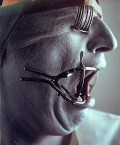
MTV: Sigismondi and Bowie both acknowledge lifting the imagery in his "Dead Man Walking" video from the work of the English painter Francis Bacon.
The look of Floria's most noted video to date, though, [QuickTime,1 MB] "Beautiful People," although it owes a debt to Austrian painter Gottfried Helnwein, was pretty much the inspiration of the artist, Marilyn Manson.
Mind Pollen, ART PART 1 – January 1, 1997
Mind Pollen, Art Part 1, 1997
FACES BY GOTTFRIED HELNWEIN
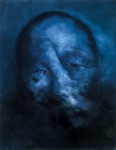
It's been said that a great portraitist can capture his subject's essence on film.
If you've never come across a photographer who's lived up to that standard,
check out Helnwein. He turns our cultural idols into flesh and blood human beings, whether they like it or not.
Helnwein Monograph, The State Russian Museum, St. Petersburg – January 1, 1997
Retrospective at the State Russian Museum, St. Petersburg, 1997
THE SUBVERSIVE POWER OF ART
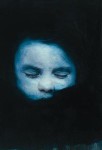
Helnwein - A Concept Artist before the Turn of the Millennium. Is it sheer coincidence that Gottfried Helnwein, the Austrian artist, created a portrait of both the German and the American? Coincidence, that he captured Warhol as a disturbing spectre on photograph, but painted Beuys? And that he then photographed the painted portrait of Beuys in the hands of Arno Breker, Adolf Hitler's favourite sculptor? There are weighty reasons for considering Helnwein the legitimate heir to Beuys and Warhol.
Helnwein Monograph, the State Russian Museum, St. Petersburg – January 1, 1997
Retrospective at the State Russian Museum, St. Petersburg, 1997
HELNWEIN: THE ARTIST AS PROVOCATEUR

Much like Joseph Beuys, who opened new, unexpected, and far-reaching spheres for art, Gottfried Helnwein has made works that extend beyond the art scene into the social and political realm. Like his predecessor, he has moved beyond the realm of pure aesthetics, engaging his art into the everyday world. Furthermore his principal interest is not to express personal feelings and emotions, but to make statements that go beyond the individual. He wants to see his work not trapped on the walls of museums and galleries, but revealed in the public domain. He expects his work to intervene in the social sphere and to have a direct impact on the life of his time.
